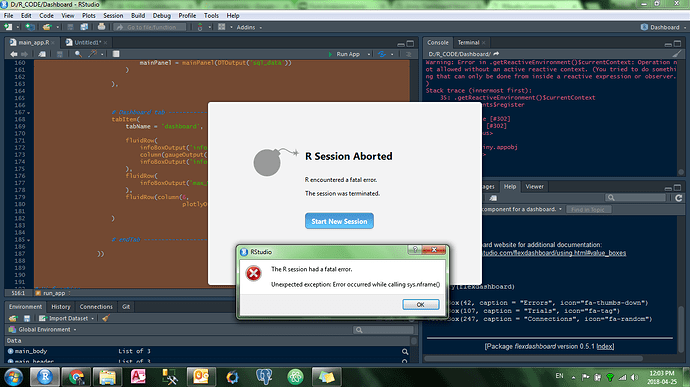

SidebarPanel() this is where you put shiny widgets (or other html objects), and they will appear in the sidebar. SidedarLayout() Sets up the ability to have a side panel (e.g., on the left or right of the page), and a main panel. For example, inside this function we use the sideBarLayout() Fluidpage is a system for setting up a webpage with different layouts. This whole piece can get pretty long, especially when there are multiple pages, tabs, or other things on the webpageįluidPage() Shiny has many functions that make it “easy” to create webpage elements.

this is where you define the User interface. If you want to use other packages, then load them here (at the beginning), before the ui and server objects are defined.

Library(shiny) is placed at the beginning of the code, this loads the shiny package. For example, it takes inputs from the user, does something based on the input, and the return an output that modifies the webpage that the user is looking at. The server object runs on the server side and handles inputs and outputs. a user somewhere in the world will go to the website and will begin running your app locally on their computer c. as the user interacts with app, we need to pass information back and forth between their computer and the web server. a server somewhere in the world will host your shiny app, and allow other people to find the app on the internet b. Server: when you deploy a shiny app a few things happen. Ui stands for user interface, and in this section we define and layout how the webpage will look. The two major parts are th ui and server objects. The code below shows an example of the major parts of a shiny app.


 0 kommentar(er)
0 kommentar(er)
